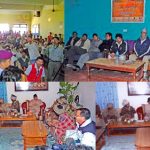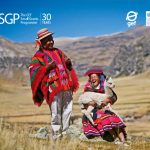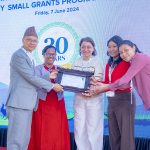Success Story
Welcome to Vulture restaurant !!
Focal Area
Biodiversity Conservation
Grantee
Bird Conservation Nepal , Kathmandu
Project No
NEP/ OP3/2/07/08
Project Location
Kawasoti VDC, Nawalparasi
Community in Pithauli, Nawalparasi is managing a unique endeavour of running the Vulture Restaurant to conserve critically endangered vultures.
The cause of decline of vulture is due to the veterinary drug diclofenac, which is widely used to treat livestock in Asia. Vultures are exposed to diclofenac by feeding on livestock carcasses, which contain residues of this drug. Even a small proportion (one in 130) of carcasses contaminated by diclofenac can be fatal to the vultures.
On the other hand, meloxicam, which is also as effective as diclofenac for the livestock is safe for vultures and other scavenging birds.
The community is managing cow ranches of around 300 in numbers. The community acquires these old cows free of cost or with minimum cost (In Nepal killing of cow is prohibited) and treat the cow for 7 days with meloxicam to wash out any traces of diclofenac.
After seven days, if the cow dies, it is first skinned and the hide is sold to the hide collectors. The remaining meat is the feed for the vultures !
UNDP Global Environment Facility (GEF) Small Grants Programme has supported Bird Conservation Nepal (BCN), a National NGO, dedicated to conserving the birds in Nepal, for the management of community vulture restaurant.
The project has trained local community to manage cow ranch, vulture restaurant and proper record keeping.
The result is quite encouraging. The census this year shows that there are 32 breeding nests of vulture compared to last years’ 17.
The Bird Conservation Nepal, with the support from local communities in Bardaghat is replicating vulture restaurant in other places also.
SPOTLIGHT
COMDEKS Nepal BASELINE 2012
SGP OP5 country strategy
COMDEKS Nepal BASELINE 2012Country Programme Strategy of Nepal
OP6 Innovation Programme IPs Access to Energy
Generic Project Proposal Form
GEF SGP OP6 National Indigenous Fellowship Application Form 2018
Proposal Summary Form
Proposal Summary Form
CPS for Operation Phase 6
GEF-SGP Baseline Assessment Report for OP6
VDCs-in-SGP Landscapes
TOR for Country Programme Strategy (2015-2018) Preparation
Every Drops Matters Guidelines
LATEST PUBLICATIONS/REPORTS/NEWS ARTICLES
New Articles
- जीवनको अस्तित्वका लागि जैविक विविधता
- प्लाष्टिकको फोहोरबाट विदेशी मुद्रा आर्जनको ढोका खोलेका विमल
- प्लाष्टिकको फोहोरबाट विदेशी मुद्रा आर्जनको ढोका खोलेका विमल
- किन बढ्दैछ प्लास्टिक साम्राज्य ?
- महिनावारी स्वास्थ्य, वातावरण र विभेदविरुद्ध प्याड क्रान्ति
- Signature Solution 4 – Environment: Greater support of biodiversity and conservation
- Highlights on 3-D printing, portable solar system supported by SGP
- Mushrooms are magic prepared by SGP HQ
- CRT News: Karyanwayein /Implementation Prize
Satoyama Initiatives
Innovation Prorgamme on IPs' access to Energy
Quick Information
What does SGP do?
SGP embodies the very essence of sustainable development. SGP channels financial and technical support directly to NGOs and CBOs for activities that conserve and restore the environment while enhancing people’s well-being and livelihoods.
How does SGP work?
SGP is rooted in the belief that global environmental problems can best be addressed if local people are involved and there are direct community benefits and ownership. SGP is convinced that with small amounts of funding, members of local communities can undertake activities that will make a significant difference in their lives and environments, with global benefits, in contrast with top-down, expert-reliant development interventions.
Links to Global Conventions
- CBD – United Nations Convention on Biological Diversity
- CCD – United Nations Convention to Combat Desertification
- UNFCCC – United Nations Framework Convention on Climate Change
- POPs – Stockholm Convention on Persistent Organic Pollutants
- Ramsar – The Ramsar Convention on Wetlands
- WHS – The World Heritage Convention
- CITES – Convention on International Trade in Endangered Species of Wild Fauna and Flora
Tips for the project proponents
- Identify and quantify project’s global benefits
- Pay sufficient attention to the on- going baseline activities and raise significant co-financing to bolster the baseline where needed.
- Identify the root causes of the problem and logical sequence of activities to address these causes at the source.
- Establish direct linkage between the project and GEF focal areas
- Develop clear project communication and outreach strategy
- Include adequate provisions for monitoring and evaluation
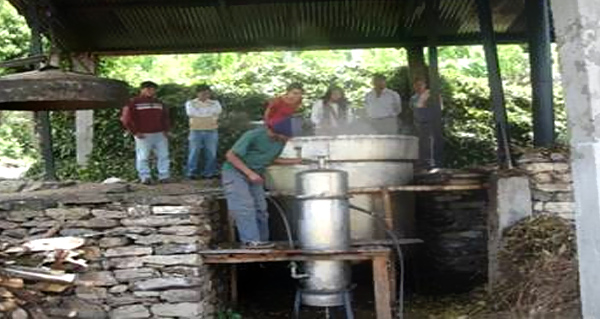
Using non timber forest products for reducing poverty
Focal Area: Bidiversity ConservationGrantee: Deudhunga Multipurpose Cooperative (DMC), DolakhaProject No: NEP/04/11Project Location:
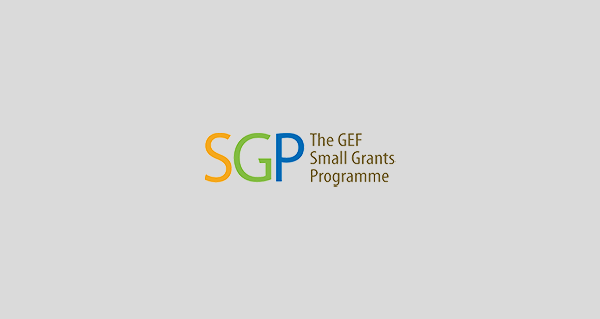
Organic farming on the rise with a new enterprise for women
Focal Area: Climate Change Grantee: Pesticide Monitor Nepal (PEMON), Kathmandu Project NEP/OP3/2/7/18 Project Location: Chitwan
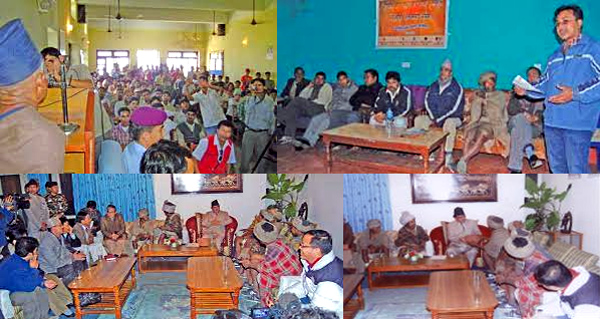
Rautes’ visit capital to ensure their nomadic rights
Focal Area: Biodiversity Grantee: Contemporary Vision, Kathmandu Project NEP/OP3/2/07/06 Project Location: Surkhet & Dailekh
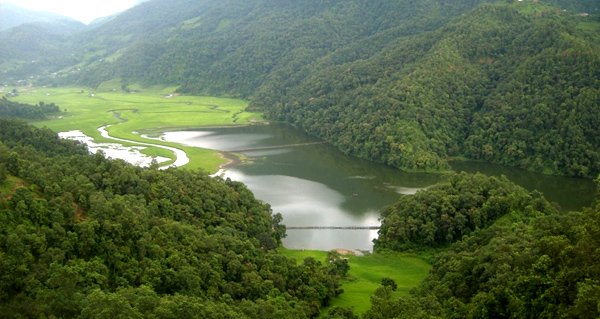
Focal Area: Biodiversity Grantee: Local Initiative for Biodiversity Research and Development (LIBIRD) Project Location: Lekhnath Municipality, Kaski Project Location: Lekhnath Municipality, Kaski
Focal Area: Biodiversity Grantee: Contemporary Vision, Kathmandu Project NEP/OP3/2/07/06 Project Location: Surkhet & Dailekh
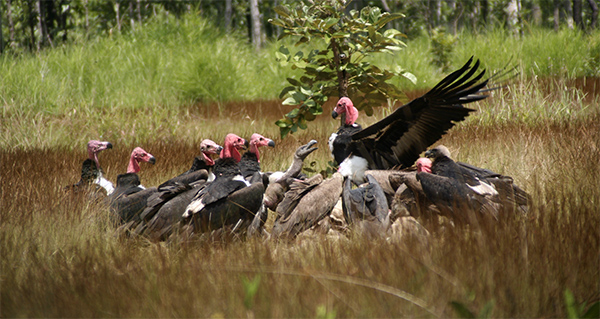
Welcome to Vulture restaurant!
!Focal Area: Biodiversity ConservationGrantee: Bird Conservation Nepal , Kathmandu Project No: NEP/ OP3/2/07/08 Project Location: Kawasoti VDC, Nawalparasi
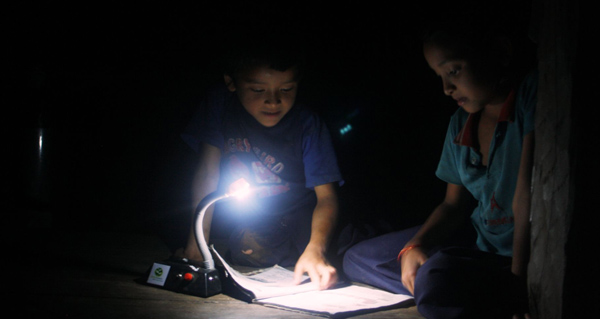
Light for all- `solar tukis` light remote villages
Focal Area: Climate ChangeGrantee: Center for Renewable Energy (CRE),KathmanduProject No: NEP/04/14 Project Location: Danabari, Bara District
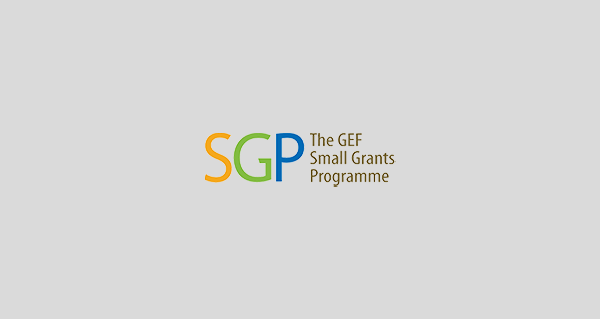
My family will not have to die of hunger …”
Focal Area: Land DegredationGrantee: Bird Conservation Nepal , Kathmandu Project No: NEP/03/11 Project Location: Makwanpur District
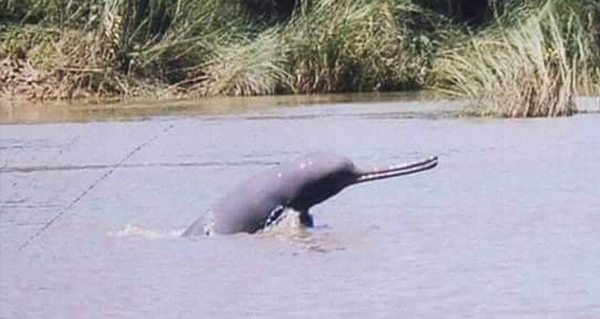
Yes, Nepal has dolphins! UNDP/GEF SGP helps communities conserve endangered species
Focal Area: International Water BodiesGrantee: Bird Conservation Nepal , Kathmandu Grantee: Bird Conservation Nepal , Kathmandu Project No: NEP/03/06 Project Location: Bhajani, Thapapur, Narayanpur VDC of Kailali District

Rice husk stove: locally affordable technological gift to a village
Focal Area: Climate ChangeGrantee: Nature and Human Development Centre (NHDC), BaraProject No: NEP/OP3/2/07/03 Project Location:Purniya VDC, Bara District

Bio-briquette production saves environment, increases income
Focal Area: Climate ChangeGrantee: Rural Region and Agroforestry Development Centre(RRAFDC), KalaiyaProject No: NEP/05/08Project Location:Buniyad, Pipradhi,Parsauni, Bhaluhi-Barwaliya and Hardiya of Bara District


